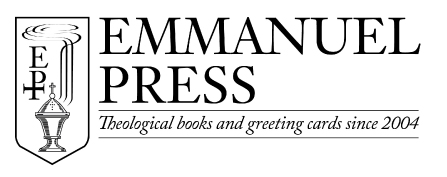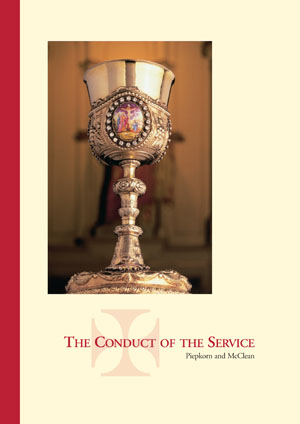A Review of Thy Kingdom Come by Rev. Larry Beane
*3 more days to pre-order a signed copy
Pastor Larry Beane gives a thoughtful, comprehensive review, addressing the book itself as well as Pastor Petersen as a preacher and teacher. His review, entitled “Meet My New ‘Old Friend,'” reads, in part:
“One found out pretty quickly about the law’s ability to sting, to bludgeon, and yes to kill. The entire sanctuary would be filled with silent men and woman staring at their shoes as Pastor Petersen condemned our Old Adams without allowing a loophole or even any wiggle room. With his intonation of one word: “Repent!” he would have his hearers almost in tears. And just when you think you could not take any more, you didn’t have to, as Pastor Petersen proclaimed the cross, the forgiveness of sins, the sweet and refreshing Good News that Jesus, the Crucified One, is our Savior and our Redeemer. If I could sum up David Petersen as preacher and as celebrant in one word, I would say: intense.
In his interactions with students, I found him to be truly “apt to teach,” possessing a sense of humor and a candor that was formative to the many men who count it a privilege to have been formed – at least in part – by his work and ministry in Fort Wayne. Obviously, men who served as field workers and/or vicars at Redeemer (I was not) have been the most influenced by him and credit him for making them the preachers they are today.
Thy Kingdom Come is a book that is not only wonderfully deep devotional material for any Christian, it is also a mini-homiletics course for pastors. Just as I counted Pastor Petersen to be a great teacher to me before I was a pastor, I count him an even greater teacher now that I am considered to be his colleague – both in the ministerium of The Lutheran Church – Missouri Synod, and as a fellow editor at Gottesdienst. Although I am the sermons editor, I continue to look to my brother-in-arms in the Lord’s service as an instructor and mentor.”
The Brotherhood Prayer Book: Hymn for the Nativity of our Lord
Audio: Hear A Solis Ortus Cardine chanted by Pr. Sean Daenzer
From east to west, from shore to shore,
Let every heart awake and sing
The holy child whom Mary bore,
The Christ, the everlasting King.
Behold, the world’s Creator wears
The form and fashion of a slave;
Our very flesh our Maker shares,
His fallen creature, man, to save.
For this how wondrously He wrought!
A maiden, in her lowly place,
Became, in ways beyond all thought,
The chosen vessel of His grace.
She bowed her to the angel’s word
Declaring what the Father willed,
And suddenly the promised Lord
That pure and hallowed temple filled.
He shrank not from the oxen’s stall,
He lay within the manger-bed,
And He, whose bounty feedeth all,
At Mary’s breast Himself was fed.
And while the angels in the sky
Sang praise above the silent field,
To shepherds poor the Lord Most High,
The one great Shepherd, was revealed.
All glory for this blessed morn
To God the Father ever be;
All praise to Thee, O Virgin-born,
All praise, O Holy Ghost, to Thee. Amen.
___________________
A Solis Ortus Cardine, Coelius Sedulius, c. 450, trans. by John Ellerton
From The Brotherhood Prayer Book
Thy Kingdom Come: An Excerpt from the Feast of the Annunciation
“The Holy Spirit overshadowed the peasant virgin of King David’s line. The Word of God entered into her ear and impregnated her with the second person of the Holy Trinity. Eve had a Seed. And by that holy Seed in her womb, St. Mary found favor with God and was freed from her fear. In this way, God took up human flesh in order to redeem human flesh by sacrifice of that flesh in perfect love. His name can only be ‘Yahweh saves,’ that is, Joshua, Jesus.”
-David H. Petersen, author of Thy Kingdom Come,
now available for pre-order
Thy Kingdom Come: An Excerpt from Saturday of Oculi (3rd week of Lent)
“He has girded His sword to His thigh. What a joyous truth this is. He rode into the death trap, the vineyard where the workers had killed His Father’s servants, into the midst of the angry mob, and He put the scarlet letter upon Himself. ‘Here am I, kill Me.’ He says, ‘I am the sinner for sinners, the scapegoat, the substitute, the whole burnt offering, the ransom, and the mercy seat.’ He rode with truth, with meekness, and with righteousness. ‘Neither do I accuse you,’ He said. No sweeter words have ever been spoken in all of history.”
-David H. Petersen, author of Thy Kingdom Come, regarding the woman caught in adultery in John 8
*This book is now available for pre-order with a release date of January 2. All pre-ordered books will be shipped first and will be signed by the author.
Thy Kingdom Come: An Excerpt from Wednesday of Oculi (3rd week of Lent)
“Lack of ceremonies does not defile a man, but neither is a lack of ceremonies a virtue. In fact, it is practically impossible to imagine piety without ceremony. Those whose hearts have been purified by the blood of Christ will confess His name, and they will respond to the confession with their bodies even as mothers hug their babies. It comes naturally. Pious, forgiven people will know and feel joy. Thus, they will treat holy things as holy—not to earn favor with God, but simply because they are thankful.”
-David H. Petersen, author of Thy Kingdom Come
*Now available for pre-order
Thy Kingdom Come: Now Available for Pre-Order
The release date for Thy Kingdom Come by David H. Petersen will be January 2, 2013. However, we are now taking pre-orders here.
Why pre-order? First of all, your order will receive priority and be among the first shipment of books starting on the release date. Second, all pre-ordered books will be signed by Pr. Petersen!
Take a look at the Table of Contents for a complete listing of sermons included in Thy Kingdom Come.
Thy Kingdom Come: An Excerpt from the Foreword by Pr. Todd Wilken

“We often evaluate the quality of sermons based on all the wrong things: I wasn’t offended, I agree with what the pastor said, it kept me interested, or any number of shallow observations. There is nothing wrong with being interested in a sermon, but that is not the touchstone. A lot of things are interesting, but that doesn’t necessarily make them good.
“This is the hallmark of a good sermon: does it preach Jesus Christ crucified for you, a sinner? If it doesn’t, no matter how good it may be in other respects, it is not a good sermon. St. Paul himself said, ‘For I decided to know nothing among you except Jesus Christ and him crucified’ (1 Cor. 2:2). Jesus requires this of his preachers. He charges His Church with the task of preaching repentance and the forgiveness of sins in His Name to all nations (Luke 24:47).
“In a good sermon, we should actually lose track of how often Jesus is mentioned. And when He is mentioned, He should be the subject of the verbs, the one doing the actions. And then pay attention: what are those verbs? Do they make Jesus sound like a coach, a therapist, an advisor—or your Savior? Listen for the verbs that Scripture gives to Jesus—the Jesus who lives for you, suffers for you, dies for you, bleeds for you, gives His life for you, is your substitute, and rises again for you. These are the verbs you ought to be hearing if in fact your pastor preaches Christ crucified.”
__________
Todd Wilken, host of Issues, Etc.,
from the Foreword of Thy Kingdom Come by David H. Petersen
Thy Kingdom Come: An Excerpt from Tuesday of Oculi (3rd Week of Lent)
“We use Matthew 18 like Miranda rights. If one Christian fails to follow the process perfectly, the whole case is thrown out. Kyrie Eleison! As though the pot can’t call the kettle black, or as though the pot’s blackness somehow excused the blackness of the kettle. The point, for our Lord, is not that we should look the other way, but that both pot and kettle need repentance and grace.”
-David H. Petersen, author of Thy Kingdom Come
Now Available from Emmanuel Press: The Conduct of the Service
In 2003, Redeemer Press published The Conduct of the Service, an invaluable resource for conducting the liturgy of the Church. After the first two print-runs quickly sold out, it was republished in 2006 after various aspects of the book were improved and reformatted, with pictures added and diagrams cleaned up. Now Redeemer Press has passed the torch to us, asking us to manage the distribution of this fine book. This excerpt from the Preface explains its origin:
“Most of Piepkorn’s students had little experience with the ceremony, reverence, and decor that flowed from him so naturally. They recognized in his liturgical actions something of the Church that they wanted to imitate. Fortunately for us they continued to press him, until finally he relented and produced The Conduct of the Service, revised in 1965. It was printed by the Concordia Seminary print shop in St. Louis and sold in the seminary bookstore. He wrote it for his students, at their insistence. He never promoted it. And thus, it never enjoyed widespread dissemination and was quickly lost to the Church. Over the years it has been much sought after and much photocopied, but the copies that still exist are mostly torn and dog-eared.
When he finally acquiesced to their demands, his training and preference for
systematics showed itself. He came at the description of ceremonies in a unique and
systematic way. He went after the rules. The rules he used are the rubrics prescribed in The Lutheran Hymnal of 1941 and in the companion volume for that Hymnal, The Lutheran Liturgy. We have reproduced the latter in an appendix for easy reference. Incidentally, those rubrics have never been replaced by the LCMS. Unless they are explicitly contradicted, replaced, or restated in new Rites provided by the Commission on Worship, they are STILL the guide for the conduct of the Services in our churches. Where they have been updated and revised, Piepkorn´s descriptions and explanations tend to make even more sense. Thus, this is the best work up to our day on the practical execution of liturgy in the LCMS…
It is our prayer that these words would again serve the Church and help unclutter Her
Services from things that hinder and distract God’s people from His gifts.”
Be sure to read the full prefaces and take a look at the Table of Contents here.
Thy Kingdom Come: An Excerpt from Thursday of Invocabit (1st Week of Lent)
“He provides for the soul through the body. You can’t wash a soul. So you wash the body with water in the Triune name of God, and the soul is thereby washed. We call that baptism. You can’t touch the soul or feed it apart from the body. So Jesus feeds our bodies with spiritual food, with what the soul needs to be strengthened and cleansed. He does not sit in heaven and think nice things toward us. He actually enters into creation. He speaks through human words, in a human voice. He feeds us when bread and wine become His body and blood, even as He washes us with water.”
-David H. Petersen, author of Thy Kingdom Come






